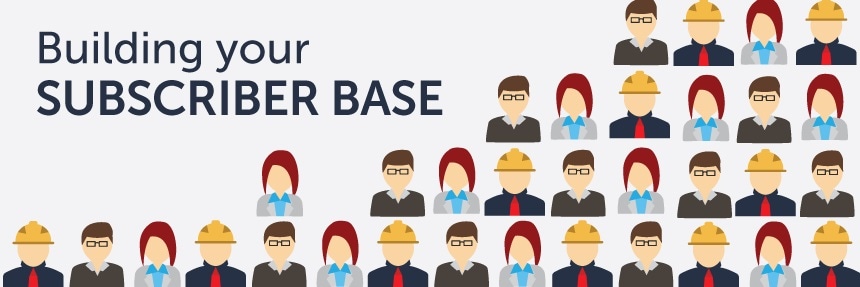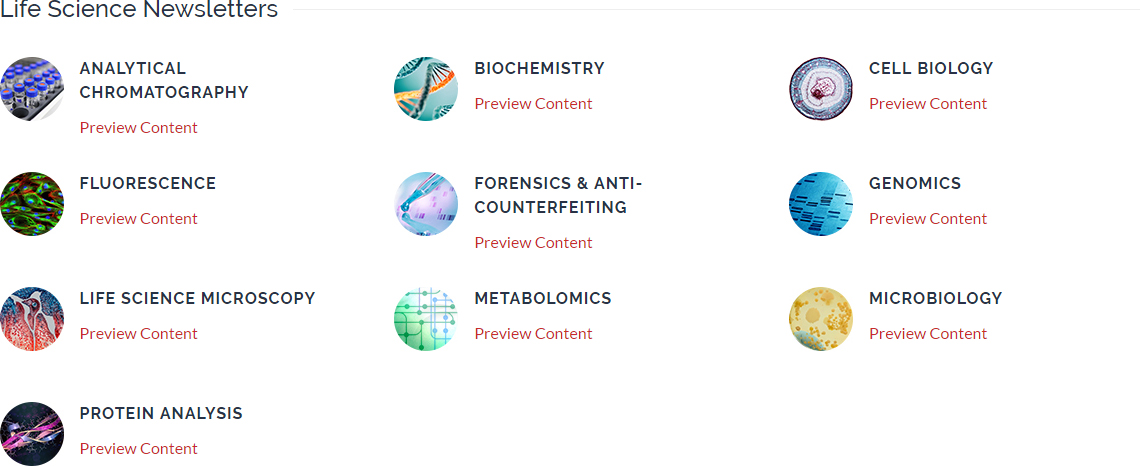
Recently AZoNetwork celebrated a big milestone; we reached over half a million active subscribers in our database. We spoke with Stuart Milne, the Editor-in-Chief and man in charge of the feat, to gain an insight into how to build your own quality organic list.
Getting the signup
Only a few years ago, it seemed that email marketing was on its way out… What has changed?
How we target individuals. We now have more tools at our disposal that allow us to target the right people at the right time. It also means that the people we target are receiving a higher value product.
More and more companies are substituting the ‘hit and hope’ approach for more focused, data-driven methods of targeting. We have been saying this for several years now: The AZoIntel platform gives incredible insight into what an individual might want in the future from us.
We can now clearly identify “content gaps” where we get lots of engagement and downloads from not much content. We then create more useful content around this subject area which, in turn, drives more subscribers.
As we continually enhance and improve the user experience we have seen a resultant increase in signups across the sites and lower unsubscribe rate in our emails. This is because people see the value and relevance to them.
Which type of content gets the most signups?
It depends on who you are looking to target and what your product is. Someone selling shoes is unlikely to need a webinar to sell shoes. However, someone selling $50K+ analytical equipment may need to take a more explanatory approach to how they market their product.
They need to tell users (typically scientists or trained specialists) why this is better than the other expensive equipment they have in their labs or facilities.
Value, trust, and familiarity.
How do you turn an unknown visitor into a named subscriber?
You have to convey value, if you don’t provide someone with what they are looking for then you are not doing a good enough job!
Trust and familiarity: If someone is familiar with a brand, product or application they are more likely to trust it. If they have never heard of your product or company, it immediately becomes an uphill battle.
Creating content in the digital age requires a deep understanding of the user experience.
The psychology of how users engage with and digest information has evolved. You must first understand your user, their needs and what’s important to them.
A scientist is used to a certain type of content developed over years of studying their field of expertise. The sources they gain the information from have also predetermined their expectations of what a good or usable source should be like.
It is our job to understand these mindsets and come up with better ways to present the user with useful, valuable and timely information that answers the questions being asked.
- Is your content valuable?
- Does it answer the question you are trying to answer?
- Can the intend reader find it easily?
- What can you give them to further enhance their experience?
Do you ever buy subscribers?
We have never bought a subscriber:
a) because we don’t need to, we have grown our database completely organically over the last 5 years using quality content from the network of sites.
b) because you cannot trust the quality of email lists from 3rd party data companies – You just don’t know where it has come from.
How many targeted newsletters do you send out?
We send out over 80 subject specific newsletters covering all manner of niche scientific, medical, and engineering specialties.
Medical condition specific editions including Alzheimer’s, Neuroscience and Diabetes and our scientific & engineering editions include Graphene, Nanoparticles, Energy Storage, Microscopy. We have just launched our latest Life Science newsletters including Cell Biology to Biochemistry and Protein Analysis.
.

View Our Full Range of Science Newsletters
How do you optimize your newsletter content?
A/B tests on subject line, pre-header text, and the sender address ensure that we optimize for opens. You have a split second in the reader’s busy inbox to convey value and convince them it is worth their time.
Once you have earned the open, you have around 5 seconds to convey the following information:
Who is this from? They should be familiar with you or your brand.
What is it about? Relevance is key, make sure that it matches up with their target persona
What’s in it for me? How can the reader benefit from reading on?
What do I need to do? Sign up, click through, download, learn more. Use a prominent, simple imperative CTA which makes it easy to take action.
Develop and keep updating your list of recipients to make sure you have the most relevant list for the content you send. That way you can feel comfortable that the person receives the email is going to be happy to get it.
What have been the most challenging audiences you have reached using a targeted customized email?
If there is something very specific, we may not have an abundance of content to justify a regular newsletter, but we still often have a significant subscriber base interested in the subject.
Customized emails often work extremely well in this scenario. In the past, we have been asked to hit an audience of product designers and engineers working in medical device manufacturing, or engineering professionals working within the water treatment industry.
We usually have the subscribers so we focus on creating specific content that would resonate with them.
The Future of Email Marketing
How do you see the upcoming GDPR legislation impacting on companies within the scientific space
GDPR, the European General Data Protection Regulation, is a key concern for all scientific companies moving forwards. This legislation regulates how companies interact with peoples’ personally identifiable information (PID) and has the potential to be a real problem if mishandled.
Steps need to be taken to be compliant by the May 2018 deadline, to make sure that the standards of security, accountability, consent, and consumer rights have been met.
With fines of up to €20 million or 4% of turnover, ‘whichever is greater’, we should see more secure and transparent holdings of PID and a new ‘security by design’ ethos across the scientific community, with more control given to the people who supply their personally identifiable data.
In terms of newsletter/email campaigns, there are strict opt-in requirements to obtain ‘granular consent’, i.e. that the subscriber knows exactly what they are signing up for.
This will likely reduce the numbers in people in email databases, however we have to remember that the people that sign up are likely the most active users and therefore those that are the best to target. Lower quantities, but a higher quality of recipient.
This will affect any company looking to target EU subscribers, if you don’t have best practice “double opt-in” set up, you need to set it up before May 2018.
Looking ahead
These measures are being put in place to reduce the noise – 20 years ago, everyone was opening emails. Nowadays we have become adept at screening for value and instantly judging what is worth our precious time.
The future will be very much data-driven as we continue to improve the way we match users with targeted, relevant content. Ultimately, those who don’t adapt will get left behind